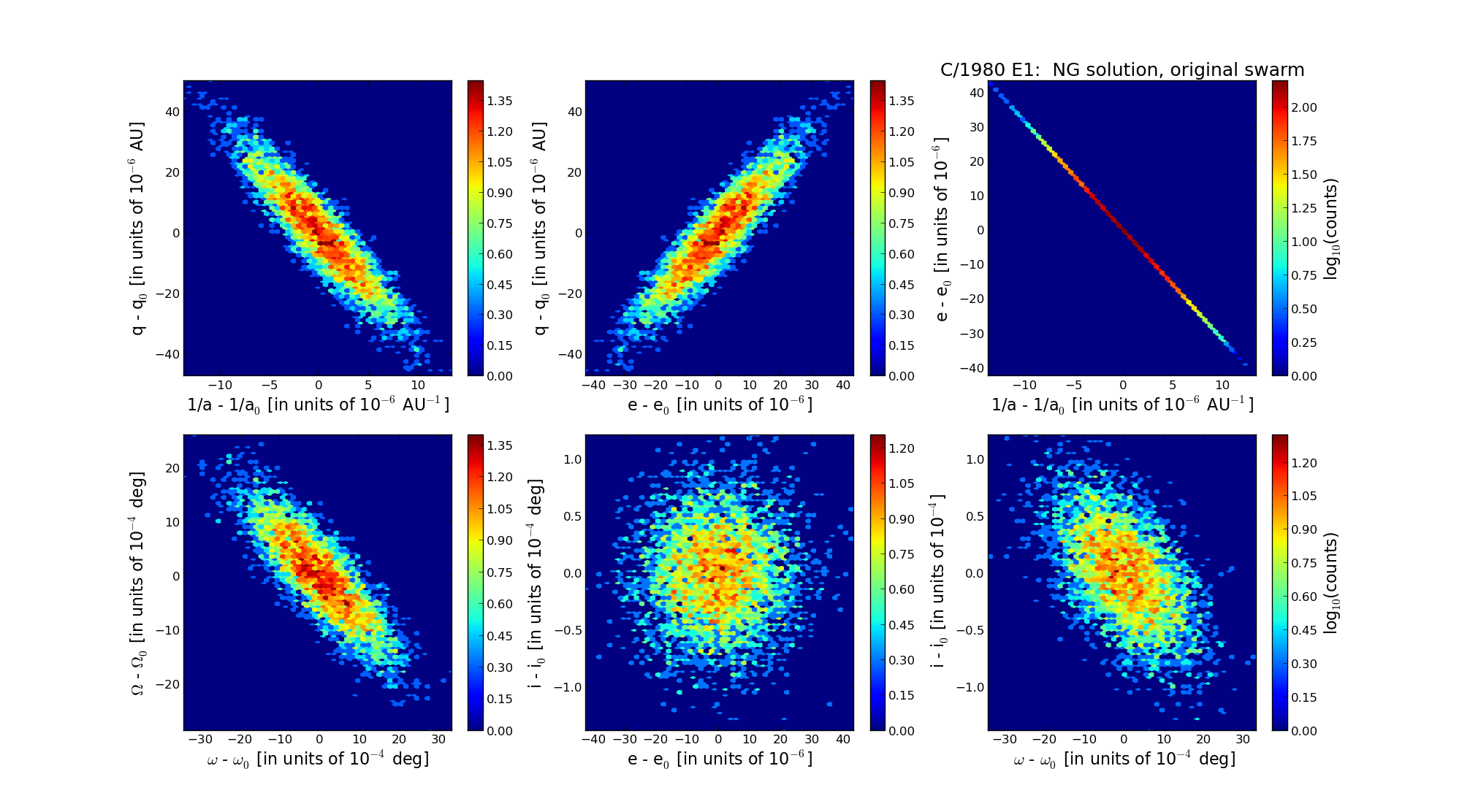| Solar System Dynamics & Planetology Group |
 |
C/1980 E1 Bowell |  |
| Solar System Dynamics & Planetology Group |
 |
C/1980 E1 Bowell |  |
| number of observations | 203 |
| number of residuals | 387 |
| data interval | 1980 Feb. 11 — 1986 Dec. 30 |
| rms [arcsec] | 1.06 |
| orbit quality class | 1a+ |
| Epoch (TT) | 19820312.0 | = JD 2445040.5 |
| time of perihelion passage (TT) | 19820312.294755 | ± 0.000438 |
| perihelion distance | 3.36388555 | ± 0.00000955 |
| eccentricity | 1.05725600 | ± 0.00001080 |
| argument of perihelion [deg] | 135.085598 | ± 0.000892 |
| longitude of the ascending node [deg] | 114.555728 | ± 0.000890 |
| inclination [deg] | 1.661772 | ± 0.000025 |
| inverse semimajor axis [10-6 au-1] | -17020.79 | ± 3.13 |
| Nongravitational parameters [10-8 au/day2] | A1 = 1095. ± 181. | A2 = 535.9 ± 93.1 | A3 = 0.0 (assumed) |

| Epoch (TT) | 16790916 | |
| time of perihelion passage (TT) | 19820405.040362 | ± 0.002147 |
| perihelion distance | 3.16929496 | ± 0.00001463 |
| eccentricity | 0.99983093 | ± 0.00001228 |
| argument of perihelion [deg] | 134.605868 | ± 0.000889 |
| longitude of the ascending node [deg] | 120.631047 | ± 0.000751 |
| inclination [deg] | 1.770359 | ± 0.000039 |
| inverse semimajor axis [10-6 au-1] | 53.35 | ± 3.87 |
| Epoch (TT) | 21900410 | |
| time of perihelion passage (TT) | 19820311.710422 | ± 0.001095 |
| perihelion distance | 3.35597902 | ± 0.00001203 |
| eccentricity | 1.05373351 | ± 0.00000942 |
| argument of perihelion [deg] | 134.961421 | ± 0.000948 |
| longitude of the ascending node [deg] | 114.562873 | ± 0.000896 |
| inclination [deg] | 1.661948 | ± 0.000025 |
| inverse semimajor axis [10-6 au-1] | -16011.28 | ± 2.77 |